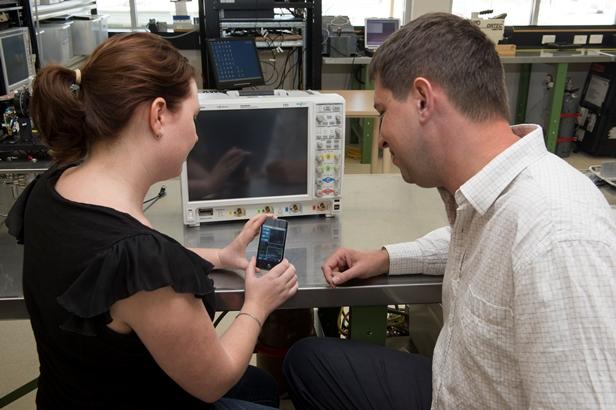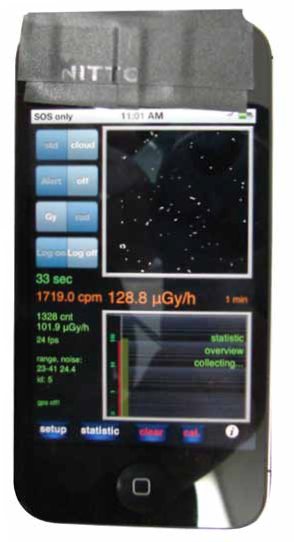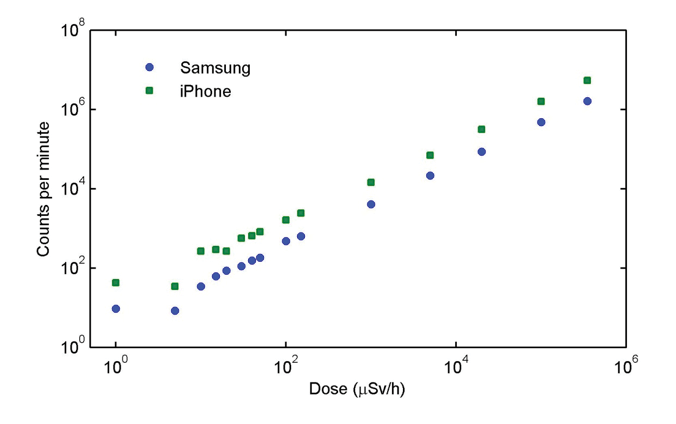

Published on the 16th June 2014 by ANSTO Staff
The popularity of smartphones continues to grow with the availability of an ever-growing range of applications. The app, Radioactivity Counter, is designed to measure a person’s exposure to radiation.
 Alison Flynn, Andrew Wotherspoon, Stewart Gill, Anthony Overton, Mark Reinhard |
How to detect radiation in a metal-oxide-semiconductor chip
The increasing popularity of smartphones and portable devices, and the availability of a wide range of downloadable applications (or ‘apps’) for such technology, continues to introduce new functionality and utility. Radiation detector apps are now available commercially for both Apple and Android devices.
These apps utilise the ionising radiation sensitivity of on board silicon-based complementary metal-oxide-semiconductor (CMOS) cameras to monitor radiation levels in the surroundings.
The CMOS devices
are small silicon chips used in cameras to detect visible light, but can also detect the higher wavelengths of gamma-ray and x-rays. The device’s response to ionising radiation is not normally evident to the user as the signal is very small when compared to that of visible light and is undetectable in the short image acquisition times in the order of 100 milliseconds.
The application of black electrical tape over the camera lens eliminates the visible light response allowing the penetrating gammarays and/or x-rays to be observed. The radiation detector app uses the phone to record the number of times it detects an interaction and that number is converted into the dose received by the phone. This study aims to determine how well the application works as a dosimeter.
With the application of the black tape, the device will be sensitive to gammarays and x-rays but will be unable to detect beta or alpha particles or neutrons.

In order to accurately work as a dosimeter the phone must have a linear response to the dose rates which it is exposed to. This means that the device can be accurately calibrated and that its dose determinations will be reproducible. Also the device should give the same result regardless of the orientation in which it is being held i.e. its angular dependence. Two smartphone devices were evaluated using the Instrument Calibration Facility (ICF) at ANSTO. The ICF consists of a range of 137Cs sources and a movable platform. The two smartphones tested were the iPhone 4S and the Samsung Galaxy S2. For each phone the camera was covered with black tape and care was taken to ensure that no light was entering the camera. Results
For both phones the counts per minute recorded were directly proportional to the dose rate for dose rates above 20 μGy/h for the Samsung and 30 μGy/h for the iPhone with results shown in Fig. 2. The average dose rate on a long haul flight is around 7 μGy/h. The poorer performance of the iPhone is attributed to the fact that only the front camera could be used; there is a possibility that light from the display of the screen could be detected in the camera through the top layer of glass.
|
